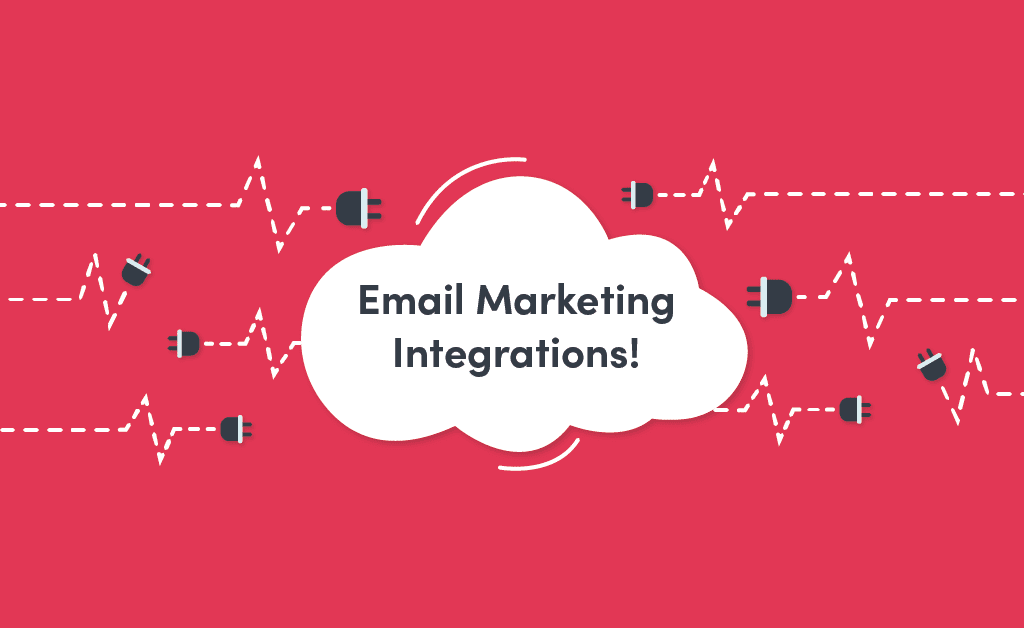
Updated on by Hayley Brown
Email marketing is a key aspect of communicating with customers about a product or service. When unified with other SaaS software in your organisation it helps to inform the type of email communication being sent out. Your email marketing could be linked to your CRM, social media, or finance, the list can go on.
We put together some of the common types of email marketing integration workflows that organisations might use. As well as the different types of API connectors to integrate with.
What is Email Marketing?
First off email marketing is the process of sending a commercial message to an audience using an email provider. They tend to consist of advertisements, sales, newsletters, business correspondence, product launches, etc.
B2B, B2C and everyone in between that is selling a product or service tend to use email marketing. This is because it spreads awareness about their offering. Using emails can help sales teams with lead generation, inform a user acquisition strategy and help understand audiences with reporting. As well as help promote new product/service launches.
Therefore creating an email marketing integration or many others can help with an abundance of tasks and processes.
Popular Email Marketing Connectors
Typical Email Marketing Integrations to Try Yourself
Email Marketing & Sales Automation
Sales and marketing are like peanut butter and jelly, they go hand in hand. So creating integrations between a sales SaaS software and an email marketing platform makes sense. The automated integrations tend to help keep track of leads, existing customers and upsell/cross-sell opportunities.
For example, a new lead has been generated from a social advert the workflow will add the lead to your marketing app. Then send out your ‘sales’ email campaign with the aim to help grow your business. As well as align your sales and marketing efforts.
Example Integrations: Email Marketing – Sales
- Automate any new lead from a website contact form or new customer trial to a Slack channel. Alternatively, a specific sales representative who would then follow up the lead with email marketing correspondence.
- If a customer has expressed interest in one particular product, you could automate a follow-up email suggesting other products that are similar and provide more to the customer but are at a higher price point. Ultimately using automated integrations for upsell/cross-sell opportunities.
Email Marketing & Website Automation
Acquiring new customers, subscribers or users and keeping track of them can be challenging. When the process is automated it can make the user acquisition experience seamless, and improve your lead generation strategies.
A good example of a marketing, email and website integration to have is with your contact form. Once this form has been filled out for subscribing to a newsletter, the user is added to the mailing list. They would then receive a ‘welcome’ campaign email, followed by the monthly blog/newsletter on the relevant date it is realised. As well as be added to your ‘sales’ email campaigns, where they are sent relevant products or services.
Example Integrations: Website – Email Marketing
- New trial sign-up, add a new customer to the trial mailing list, send ‘trial welcome campaign’, delay, send ‘halfway through trial’ campaign, delay, send ‘trial ending campaign’, delay, send ‘feedback & next steps’ campaign
- Trigger an email reminder when a customer has had an item in their basket for a while or if they have abandoned checkout.
Email Campaign Performance Reporting
To understand how customers are interacting with a brand’s marketing and emails, an integration between the two systems can be set up. Ideally with an analytical tool to assess performance. For instance, updating analytic goals with new clicks in the email campaign. As well as creating new measurements when emails are opened or when there are new subscribers.
With some marketing and email providers such as MailChimp, analytics or reporting can be included within your account. As well as linked to your Google Analytics. Both will help inform your marketing efforts and future email campaigns.
Example Integrations Reporting – Email Marketing
- Produce monthly reports for email marketing campaign open rates
- Sync data with analytics to see if emails are successful in referral to a website
- Monitor email marketing campaign clicks, impressions etc.
- Combine campaign data with your CRM to get better insight into what content resonates with your clients
Email & Ecommerce Systems Integration
Integrating customer data such as their birthday with your email marketing helps create a personalised user experience. Therefore, customer data from a SaaS platform could be searched for customers that match a supplied query. In this case, a ‘birthday’ field. Then an email marketing campaign is triggered once a customer(s) birthday, in the appropriate mailing list is reached. Either before or during the event. Each customer will have their own unique URL so when it is clicked it will take them to a landing page. There is will feature their own birthday discount code.
Creating personalised experiences for your existing customers can help encourage future purchases. As well as, serve as a reminder if they haven’t used your product/service for a while. They can also increase your click-through rate due to a personalised offer. This will result in an increased interest in your products/services through a positive user experience.
Example Integrations: Ecommerce – Email Marketing
- New product launch with an email marketing campaign
- Send a valid short-term discount code to loyal customers
- Trigger a ‘customer birthday’ email campaign based on CRM customer data
Why Integrating Email Marketing systems are beneficial to your organisation?
When syncing marketing and emails with other SaaS software within an organisation it can help orchestrate the data. This allows a marketing department to tie systems and processes together. As a result, they can unify their email marketing with their CRM, point-of-sale, and analytic tools. Resulting in personalised, efficient communication with customers, and helping create a seamless experience.